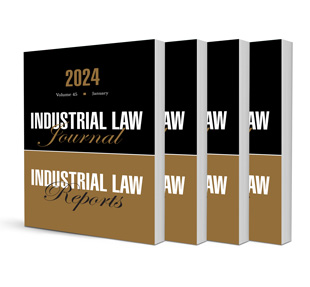Abstract
The article addresses the issue of disguised employment in today’s economy where, despite a proliferation of new forms of work, the right to statutory labour rights remains dependent on employment status. It examines the origin of the prevailing dominant impression test in Smit v Workmen’s Compensation Commissioner, noting the court’s preoccupation with returning South African law to its Roman-Dutch roots and its rejection, on flimsy legal grounds, of the organisation test as an alien institution of English law. It was thereafter sidelined for decades and, although it has been recognised in recent labour legislation and acknowledged in recent case law, it has not been applied or developed to a significant extent. Noting that the Smit judgment is not aligned with constitutional values, the article argues that employment protection should apply to everyone who regularly works for (the business of) another and that the organisation test offers a crucial indicator of employment status that resonates with constitutional principles. It further suggests that international precedent, such as the ‘ABC’ standard incorporated in the California Labor Code, can be drawn on in developing the organisation test in the South African context.

